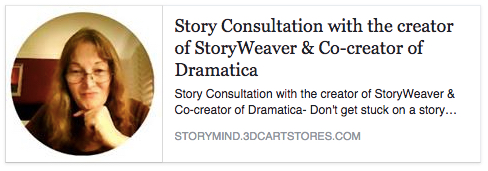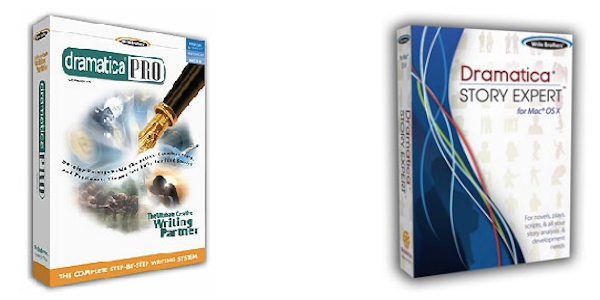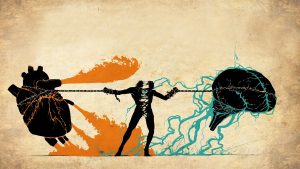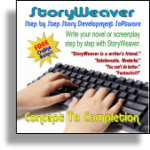Protagonist tries to achieve the goal.
Antagonist tries to stop him.
That’s the simple answer, and it is true enough. But there is a lot more to know about these two essential characters, and the more you learn, the more powerful and effective your Protagonists and Antagonists will be.
To begin with, a Protagonist is not a Hero. A Hero is a compound character who, in addition to being a Protagonist is ALSO the Main Character (the one we identify with).
When these two elements are combined, you get a typical Hero. But these elements don’t have to be in the same single character. The Protagonist might be one character who is driving the quest forward, but the reader/audience identifies with a different character (sees the story through their eyes).
In fact, that is exactly how it is done in To Kill A Mockingbird. Atticus Finch, is an open-minded lawyer in a racially biased Southern town in the 1930s, trying to get a fair trial for a black man wrongly accused of raping a white girl. But we don’t see the story through his eyes, but through those of his young daughter, Scout. Scout is the Main Character and Atticus is the Protagonist.
In a similar manner, an Antagonist is not a Villain. A Villain is another compound character who is both an Antagonist and ALSO the Influence Character. (The Influence Character is the one who’s point of activities and attitudes bring the Main Character to the point of considering changing or violating his own beliefs, morals, or standards.
When these two elements are combined, you get a typical Villain. But, as with the Hero, they don’t have to be in the character. So, the Antagonist might be pushing to stop the Protagonist, but another character is the one pressuring the Main Character to abandon his or her beliefs.
Again, we can see this at work in To Kill A Mockingbird. Bob Ewell is the father of the white girl who the black man is accused of raping. He wants to have the man lynched, so clearly he is out to stop Atticus, the Protagonist, and that makes Ewell the Antagonist.
But, it isn’t Mr. Ewell who puts any pressure on Scout (the Main Character) to change her beliefs. That role goes to Boo Radley, the mysterious boogeyman who lives down the street. Since Scout is the Main Character we see prejudice through her eyes – through the eyes of a child. And because we identify with her, we are as fearful as she is of Boo. All the kids are sure he is a monster that does terrible things to children, and Scout believes it to.
But in the end, it turns out Boo has been protecting Scout and the other children all along from Bob Ewell who wanted to harm them to get back at Atticus. And Boo even left little toys for the kids to find. Scout must now realize she herself was prejudice against Boo without ever having any direct information about him. And it was Boo’s actions and attitudes that eventually caused her to change her beliefs.
So in summary, the Protagonist is the Prime Mover of the effort to achieve the Story’s Goal – that and nothing more. The Antagonist is the Chief Obstacle to that effort and that’s all he is, functionally. In a sense, Protagonist is the irresistible force and Antagonist is the immovable object.
Because they have specific dramatic functions not based on personality or perspective, the Protagonist and Antagonist are archetypal characters, simple as that.
Having refined our definition of what a Protagonist and Antagonist truly are, we’re going to put aside compound characters and focus solely on the archetypal functions.
To begin our exploration we might ask, “Where do the Protagonist and Antagonist come from?” Simple answer is they come from us – from the roles we play when we form a group or team for a common purpose.
When we gather in groups to solve common problems, we get a lot more done if we specialize so that one person becomes the voice of reason and another the resident skeptic. This way, each of the specialists can give his or her full attention to the problem from his perspective, and as a whole, the group gets a deeper dive into the issues that if we all tried to do all the jobs ourselves.
So, in a sense, the functions that emerge in a group, represent the same traits we have in our own minds as individuals. For example, in our own minds, we have reason and skepticism, and as a group organizes, one member will emerge as the voice of reason, and another as the resident skeptic.
And, of course, every group has a Protagonist who wants to set and achieve a goal, and an Antagonist wants to stop him. So, in a word, the Protagonist represents elements of ourselves. Protagonist is our Initiative, the motivation to change the status quo. The Antagonist embodies our Reticence to change the status quo. These are perhaps our two most obvious human traits – the drive to alter our environment and the drive to keep things the way they are. That is likely why the Archetypes that represent them are usually the two most visible in a story.
Functionally, the character you choose as your Protagonist will exhibit unswerving drive. No matter what the obstacles, no matter what the price, the Protagonist will charge forward and try to convince everyone else to follow.
Without a Protagonist, your story would have no directed drive. It would likely meander through a series of events without any sense of compelling inevitability. When the climax arrives, it would likely be weak, not seen as the culmination and moment of truth so much as simply the end.
This is not to say that the Protagonist won’t be misled or even temporarily convinced to stop trying, but like a smoldering fire the Protagonist is a self-starter. Eventually, he or she will ignite again and once more resume the drive toward the goal.
What, now, of the Antagonist? We have all heard the idioms, Let sleeping dogs lie, Leave well enough alone, and If it works – don’t fix it. All of these express that very same human quality embodied by the Antagonist: Reticence.
To be clear, Reticence does not mean that the Antagonist is afraid of change. While that may be true, it may instead be that the Antagonist is simply comfortable with the way things are or may even be ecstatic about them. Or, he or she may not care about the way things are but hate the way they would become if the goal were achieved.
Functionally, your Antagonist will try anything and everything to prevent the goal from being achieved. No matter what the cost, any price would not seem as bad to this character as the conditions he or she would endure if the goal comes to be. The Antagonist will never cease in its efforts, and will marshal every resource (human and material) to see that the Protagonist fails in his efforts.
Without an Antagonist, your story would have no concerted force directed against the Protagonist. Obstacles would seem arbitrary and inconsequential. When the climax arrives, it would likely seem insignificant, full of sound and fury, signifying nothing.
As with the Protagonist, don’t be trapped into building an Antagonist with a mean personality. There are many stories with Antagonist’s who are actually right in trying to stop the goal.
Think of James Bond for a moment. The “Bond Villain” is almost always the Protagonist – starting some new scheme with a goal to change the world. Bond himself is the Antagonist, as strange as it may seem, for his job is to prevent the change and/or put things back the way they were. So, as described earlier, it may well be that the Protagonist is the Bad Guy and the Antagonist is the Good Guy. Or, in fact both may be Good or both Bad, as often happens in more sophisticated stories.
The important thing is that the Antagonist must be in a position in the plot to place obstacles in the path of the Protagonist, not just to make the quest more difficult (another archetype does that), but to actually try to prevent the Protagonist from succeeding.
Now that you know a bit more about who the Protagonist and Antagonist really are, see if you can’t refine their dramatic functions in your next story or even the one you may currently have in development
Learn more about Archetypal Characters





 Consider the Main Character and the Influence Character who, it would seem at first blush, are as opposite as they can be in regard to some underlying philosophical perspective, world view, belief system or moral code.
Consider the Main Character and the Influence Character who, it would seem at first blush, are as opposite as they can be in regard to some underlying philosophical perspective, world view, belief system or moral code.


You must be logged in to post a comment.